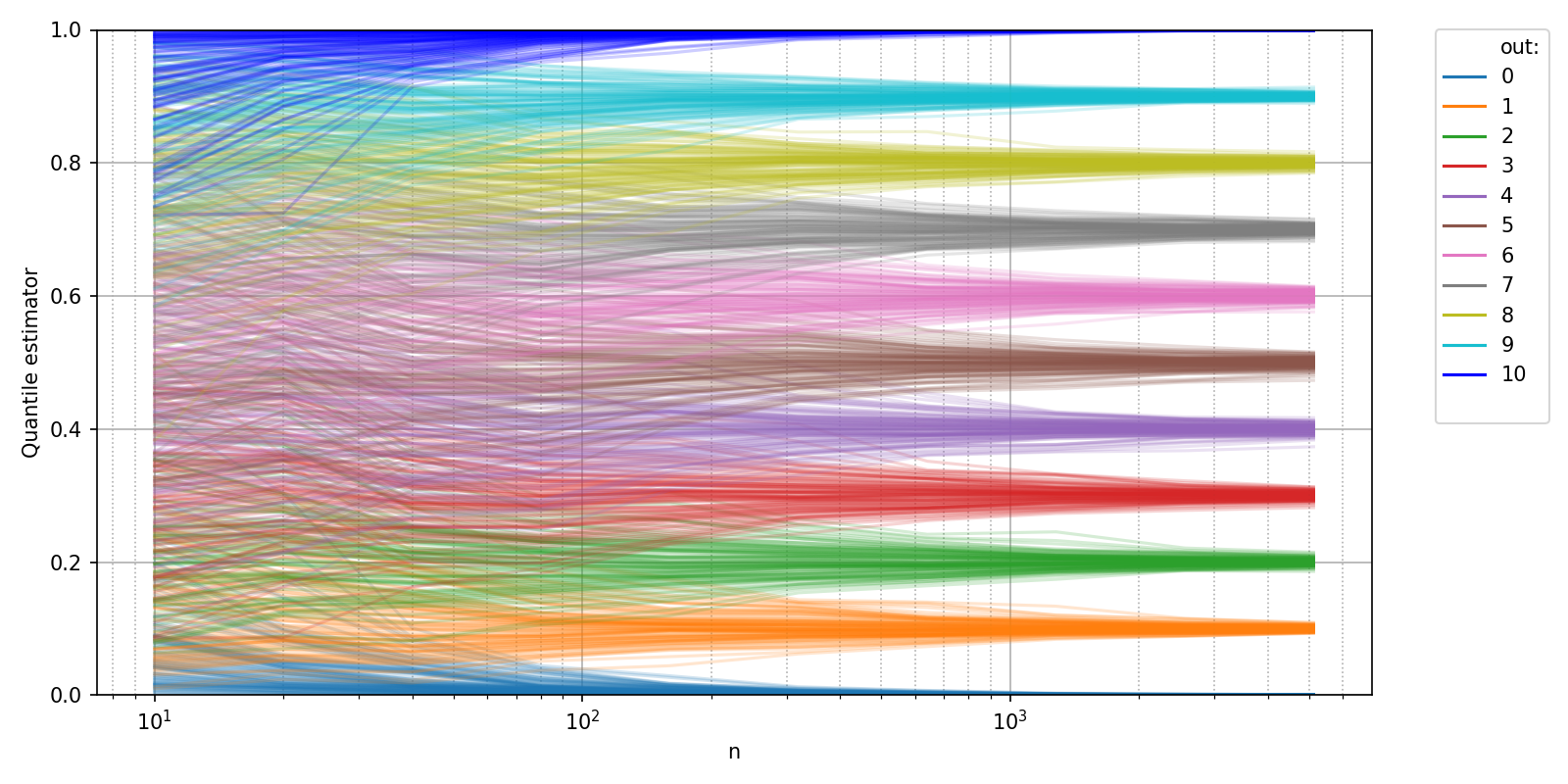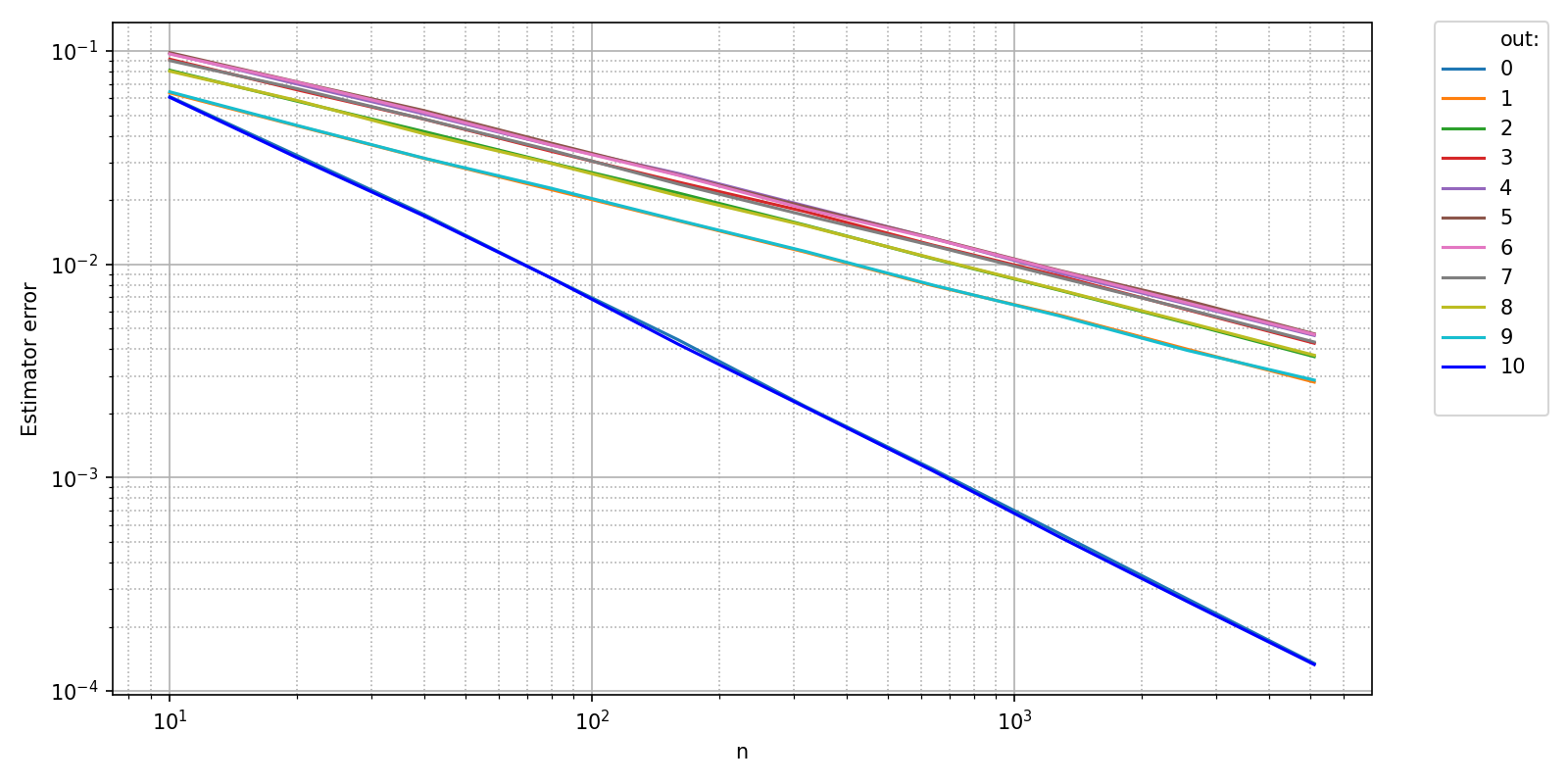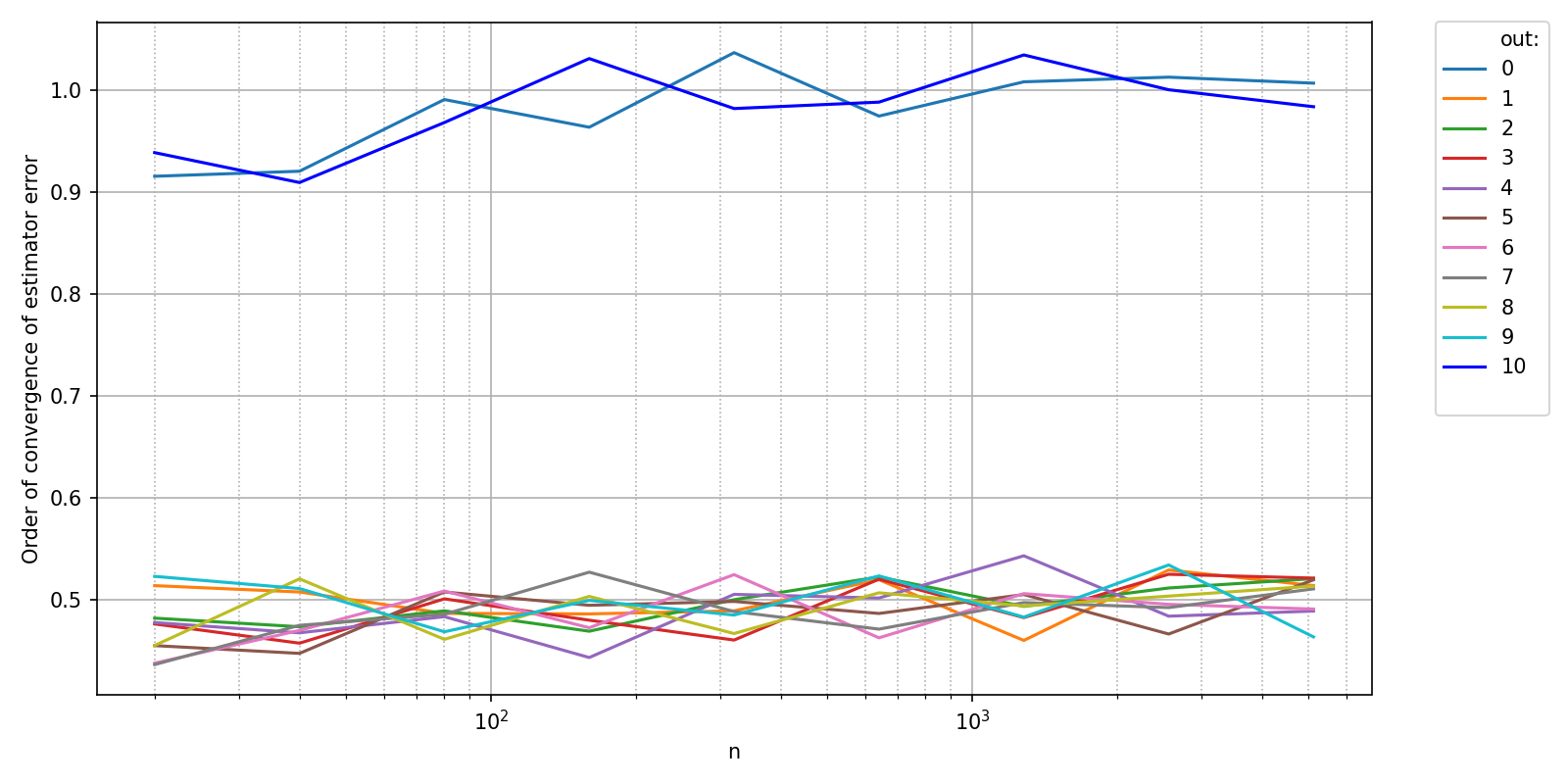Note
Go to the end to download the full example code.
Vector outputs#
Pyquickbench can also be used to benchmark functions that return multiple values. This capability corresponds to mode = "vector_output" in pyquickbench. The following benchmark measures the convergence of quantile estimatores of a uniform random variable towards their theoretical values.
Let us first observe how the values of the naive quantile estimator as returned by uniform_quantiles evolve with increasing number of simulated random variables:
import pyquickbench
def uniform_quantiles(n,m):
vec = np.random.random((n+1))
vec.sort()
return np.array([abs(vec[(n // m)*i]) for i in range(m+1)])
m = 10
uniform_decile = functools.partial(uniform_quantiles, m=m)
uniform_decile.__name__ = "uniform_decile"
all_funs = [
uniform_decile ,
]
n_bench = 10
all_sizes = [m * 2**n for n in range(n_bench)]
n_repeat = 100
all_values = pyquickbench.run_benchmark(
all_sizes ,
all_funs ,
n_repeat = n_repeat ,
mode = "vector_output" ,
StopOnExcept = True ,
pooltype = 'process' ,
)
plot_intent = {
pyquickbench.default_ax_name : "points" ,
pyquickbench.repeat_ax_name : "same" ,
pyquickbench.out_ax_name : "curve_color" ,
}
pyquickbench.plot_benchmark(
all_values ,
all_sizes ,
all_funs ,
plot_intent = plot_intent ,
show = True ,
logy_plot = False ,
plot_ylim = (0.,1.) ,
alpha = 50./255 ,
ylabel = "Quantile estimator" ,
)

While the above plot hints at a convergence towards specific values, we can be a bit more precise and plot the actual convergence error.
def uniform_quantiles_error(n,m):
vec = np.random.random((n+1))
vec.sort()
return np.array([abs(vec[(n // m)*i] - i / m) for i in range(m+1)])
uniform_decile_error = functools.partial(uniform_quantiles_error, m=m)
uniform_decile_error.__name__ = "uniform_decile_error"
all_funs = [
uniform_decile_error ,
]
n_repeat = 10000
all_errors = pyquickbench.run_benchmark(
all_sizes ,
all_funs ,
n_repeat = n_repeat ,
mode = "vector_output" ,
StopOnExcept = True ,
pooltype = 'process' ,
)
plot_intent = {
pyquickbench.default_ax_name : "points" ,
pyquickbench.fun_ax_name : "curve_color" ,
pyquickbench.repeat_ax_name : "reduction_median",
pyquickbench.out_ax_name : "curve_color" ,
}
pyquickbench.plot_benchmark(
all_errors ,
all_sizes ,
all_funs ,
plot_intent = plot_intent ,
show = True ,
ylabel = "Estimator error" ,
)

The above plot shows a very distinct behavior for the estimation of the minimum and maximum values compared to the other quantiles. The following plot of convergence order makes this difference even more salient.
pyquickbench.plot_benchmark(
all_errors ,
all_sizes ,
all_funs ,
plot_intent = plot_intent ,
show = True ,
transform = "pol_cvgence_order" ,
ylabel = "Order of convergence of estimator error" ,
)
